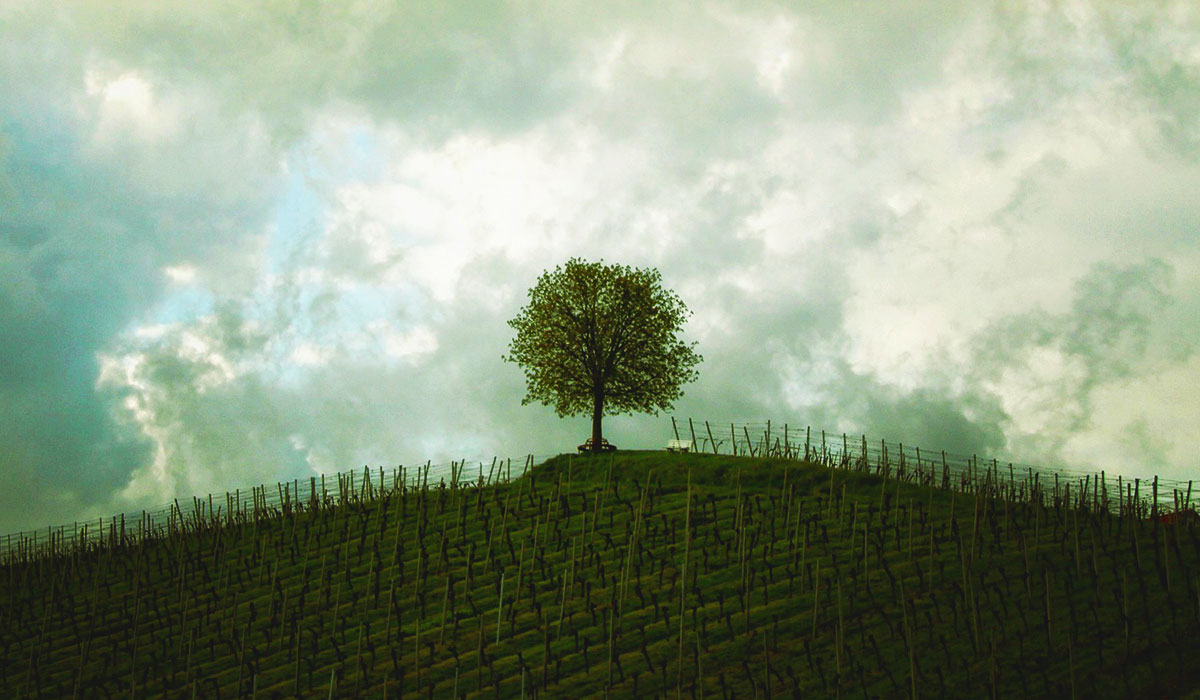? Bastion of French wines Châteauneuf-du-Pape wines have not waited for their appellation d'origine contrôlée validation to be present in the great courts of Europe. Our team presents the history of Châteauneuf, and the things you need to know. Our site also offers you the appellation's greatest vintages, 100% in stock and available for immediate purchase. Secure 100% delivery within 24h (mainland France). We also deliver anywhere in Europe as quickly as possible.
Top 6 things to know about Châteauneuf du Pape
- Its name comes in part from the popes, who discovered and revealed the Châteauneuf-du-Pape terroir when they settled in Avignon in the 14th century. 2 popes were responsible for discovering the wines of Châteauneuf-du-Pape. The first, Clement V, discovered the complexity and richness of this terroir, but it was his successor, John XXII, who developed Châteauneuf-du-Pape into the wines it is today.
- Trade in Châteauneuf-du-Pape wines throughout Europe began to develop in the 18th century. Château La Nerthe was the first château to ship bottled wine instead of barrels. This new way of doing business was to enhance the reputation of Châteauneuf-du-Pape wines.
The winegrowers of Châteauneuf-du-Pape understand that their wines, their terroirs and their way of doing things must be protected. Determined to defend their quality and reputation, they were behind the creation of the Appellation d'Origine Contrôlée. The first work took place in 1923, when a team of winegrowers visited the Château Fortia estate. The owner, Baron Le Roy, a winegrower and lawyer by training, helped them draw up the rules to be respected. In October 1923, all these rules came together at a general meeting to form the Châteauneuf-du-Pape Winegrowers' Union. The rules laid down were: regulation of cultivation, management of alcohol levels, exhaustive list of authorized grape varieties, etc.
- 10 years later, the Cour de Cassation confirmed the rules defined by the winegrowers' union, albeit with a few modifications. This was a crowning achievement for the winegrowers of Châteauneuf-du-Pape, who, 3 years after the decree establishing France's first AOC viticulture label, saw the appellation of Châteauneuf-du-Pape established.
- Today, the appellation represents 3,132 hectares of production, with vines planted in 5 communes: Châteauneuf-du-Pape, Orange, Courthézon, Bédarrides and Sorgues. Châteauneuf-du-Pape wines can be made from 13 different grape varieties. Originally, the vines were planted "full", i.e. mixed together. The winemaker harvested and vinified all the grapes at the same time. Today, red wines represent 94 % of production and white wines 6 %. Grenache, whether black, gray or white, has become the majority grape variety in most of the wines produced.
- The 13 grape varieties are: grenache (black, gray, white), syrah, mourvèdre, cinsault, clairette, vaccarès, bourboulenc, roussanne, counoise, muscardin, picpoul, picardan and terret noir.
- Another historical fact, and not the least, is the armorial bottle, emblematic of Châteauneuf-du-Pape wines. The bottle was created in 1937. The winemakers wanted a bottle to match the quality of their wines. That's why they created this bottle, with the crest symbolizing a papal tiara, surrounded by the inscription Châteauneuf-du-Pape contrôlé, which is written in Gothic letters.
☀ Now you know the history of the development of Châteauneuf-du-Pape wines. We invite you to discover the winegrowers present in this appellation, as lovers of powerful, complex, terroir-driven wines will be more than satisfied.






![✨ Comptoir des Millésimes honors Champagne's great winemakers ✨[LINK TO THE ORGANIC CELLAR]We've selected 11 exceptional estates that reveal the full richness of Champagne terroir through unique, refined cuvées. Hugues Godmé - In Verzenay, this family-run biodynamic estate offers precise, vibrant champagnes with a beautiful mineral tension.Egly-Ouriet - A benchmark for the Montagne de Reims, its powerful champagnes, aged for long periods in barrel, impress with their complexity.Moussé Fils - In Cuisles, the Meunier grape is king. Pertois-Moriset - Pure, taut Chardonnay Grands Crus for lovers of chalky finesse. A fine address in Mesnil-sur-Oger.Geoffroy - In Aÿ, this domaine produces fine champagnes, carefully crafted and barrel-aged to reveal the full complexity of the terroir.Larmandier-Bernier - Biodynamic viticulture, exceptional parcels and purity. Crystal-clear, intense champagnes for connoisseurs.Roger Coulon - Eight generations of expertise at Vrigny. Balanced, subtle and elegant champagnes.A. Bergère - In Avize, a dynamic house offering expressive, fruity and accessible cuvées.Adrien Renoir - A promising talent from Verzy, he produces fine, complex champagnes with a true sense of terroir.De Sousa - Emblematic house in Avize. Richness, depth, long ageing: Chardonnay at its peak.Pierre Paillard - In Bouzy, the family magnifies Pinot Noir with vinous, racy and sincere cuvées.📦 Order now on our website#ComptoirdesMillésimes #Champagne #VigneronsIndépendants #GrandVin #ChampagnesdeTerroir #LivraisonRapide](https://www.comptoirdesmillesimes.com/blog/wp-content/plugins/instagram-feed/img/placeholder.png)